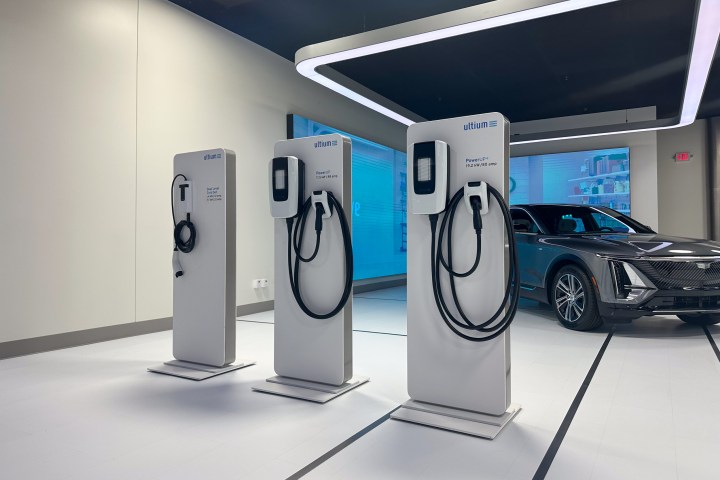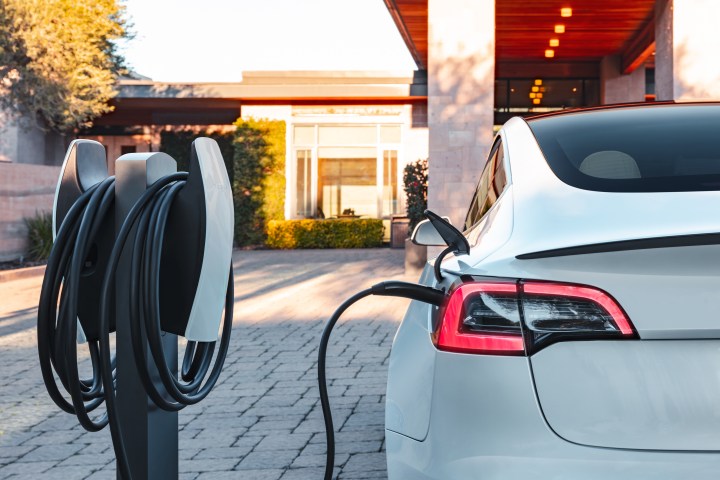
Charging is changing in the U.S. — and quickly. Tesla has all but won the war for the standard charging connector, meaning that charging will likely get a whole lot more convenient in the near future. But on top of that, charging networks are also expanding — with the likes of Mercedes-Benz jumping in on the action.
Earlier this year, Mercedes announced that it would be building charging stations in partnership with MN8 Energy. More recently, it shared that it was finally planning on opening up the first of these stations in October.
The first stations will only be in Atlanta, so don’t plan your road trip just yet. But now seem like an opportune time to step back and take a look at the state of charging in the U.S. How far have we come? And how far do we need to go?
What are the major charging networks?
In the U.S., a number of major charging networks make up the majority of the infrastructure. The largest of these is ChargePoint, which offers a huge number of Level 2 chargers, and a much smaller number of DC fast chargers. If you want DC fast charging, then the largest network is the Tesla Supercharger network, with chargers that range up to 250 kilowatts — the fastest charging speed that Teslas can handle. Tesla offers the smoothest charging experience, since Tesla owners who charge at a Tesla charging station don’t need to pay every time — the charger talks to the car, which has your payment info on file. It all happens automatically.

Blink and SemaConnect are next, thanks to their huge network of Level 1 and Level 2 chargers. Electrify America comes in second place to Tesla when it comes to DC fast chargers, though. Other charging networks include the likes of EVgo, which is quite large, along with EV Connect.
Of course, newcomers could shake things up a little. If Mercedes, for example, is able to actually build out a large network, it could provide a superior charging experience — especially as faster-charging cars roll out. Mercedes has said that its chargers will be able to charge at up to 400kW, which is faster than any other car charger out there right now, and could allow a car to fully charge in 10 to 15 minutes, if it supports that fast charging speed.
Which states have the most chargers?
So where is the best place to live if you have an electric car? Well, the answer is perhaps a little obvious — California.
It’s not even close. According to the U.S. Department of Energy, at the time of this writing, California had 14,997 public charging stations. Second place? New York, with 3,534. Of course, given that California has a higher population, and the fact that so many people in California have EVs, it does make sense that California would be so far ahead the other states. Third place is Florida, with 2,876.

Over time, it’s expected that these numbers will rise, and quick — only a small portion of U.S. drivers have electric cars, and while many drivers will charge at home, we’ll still need the infrastructure to support public charging too.
How many chargers do we need?
Electric car adoption is moving quickly, and as such, we’re going to need a whole lot more electric car chargers in the very near future. According to S&P Global Mobility, we’re going to need around 1.2 million Level 2 chargers and 109,000 Level 3 chargers by 2027. That’s only four years away. That number rises pretty dramatically by 2030, when it’s expected that new vehicles will be 40% electric. S&P notes that by then, we’ll need 2.13 million Level 2 chargers, and 172,000 Level 3 chargers.
Currently, estimates suggest that the U.S. has 126,500 Level 2 chargers and 20,432 Level 3 chargers — though the 16,822 Tesla chargers are counted separately. Even when added in, however, we’re pretty far behind.
In other words, we have a long, long way to go. As long as companies stick with EV charging standards, more chargers are definitely better — and more charging companies are better too. Hopefully, EV manufacturers will work on ways to make this all more seamless — like using a Tesla charger — however it’s entirely possible that a mass move to the Tesla NACS port will help with that.



